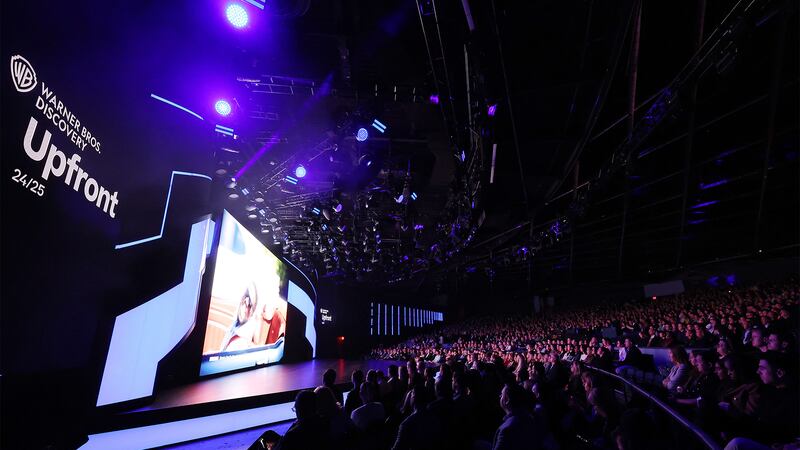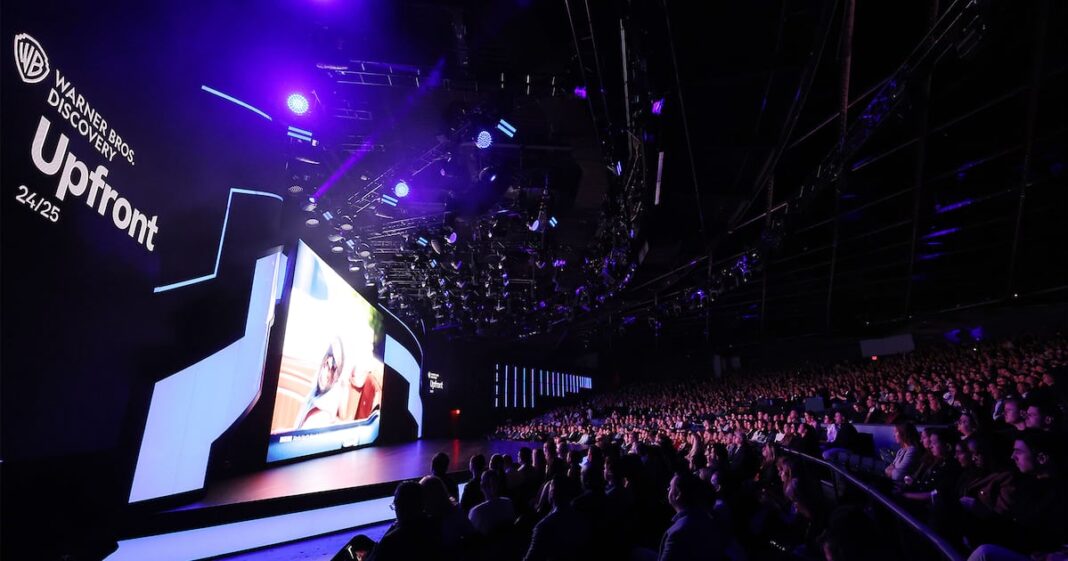Welcome, dear readers, to the exciting world of television and streaming giants, where innovation meets competition. Join us as we dive into the heart of Upfronts week, an annual event that brings together the nation’s top media executives, advertisers, and of course, the cream of the crop when it comes to content creators.

As the curtains close on this thrilling week, we find ourselves witnessing an array of industry titans, including WBD, Netflix, and YouTube, showcasing their latest anthems of television and digital entertainment. The stage is set, tensions are high, and the spotlight is firmly on these powerhouses as they vye for viewers’ attention, advertisers’ dollars, and the hearts of content consumers everywhere.

How Netflix Plans to Compete with Traditional Sports Broadcasters

As the sports broadcasting landscape continues to evolve, Netflix is poised to make a significant impact. With its vast resources and global reach, the streaming giant is well-positioned to challenge traditional sports broadcasters. According to recent reports, Netflix plans to invest heavily in sports content, with a focus on acquiring rights to major sporting events and leagues. This move is expected to disrupt the traditional sports broadcasting model, which has long been dominated by major networks and cable providers.
Netflix’s strategy is likely to involve a combination of exclusive content deals and partnerships with sports organizations. By securing exclusive rights to popular sports events, Netflix can attract new subscribers and retain existing ones. Additionally, partnerships with sports organizations can provide Netflix with access to a wealth of content, including live events, highlights, and analysis.
Key Components of Netflix’s Sports Content Strategy
- Acquiring rights to major sporting events and leagues
- Partnering with sports organizations to access exclusive content
- Developing original sports content, including documentaries and analysis programs
- Investing in sports-related technology, including virtual reality and augmented reality experiences
By implementing this strategy, Netflix can establish itself as a major player in the sports broadcasting market. With its global reach and vast resources, Netflix is well-positioned to challenge traditional sports broadcasters and provide fans with a unique and engaging viewing experience.
YouTube’s Brandcast Presentation
What to Expect from YouTube’s Evening Presentation
YouTube’s Brandcast presentation is one of the most highly anticipated events of Upfronts week. As the largest video sharing platform in the world, YouTube has a significant impact on the sports broadcasting landscape. During its presentation, YouTube is expected to unveil new sports content initiatives and announce partnerships with major sports organizations.
YouTube’s sports content strategy is focused on providing fans with a unique and engaging viewing experience. With its vast library of user-generated content and advanced video sharing technology, YouTube is well-positioned to challenge traditional sports broadcasters. During its presentation, YouTube is likely to highlight its ability to reach a younger demographic and provide sports content in a variety of formats, including live events, highlights, and analysis.
YouTube’s Sports Content Strategy
YouTube’s sports content strategy is centered on providing fans with a unique and engaging viewing experience. With its vast library of user-generated content and advanced video sharing technology, YouTube is well-positioned to challenge traditional sports broadcasters. YouTube’s strategy involves a combination of exclusive content deals and partnerships with sports organizations. By securing exclusive rights to popular sports events, YouTube can attract new users and retain existing ones.
How YouTube Plans to Engage with Sports Fans
- Providing live events and highlights in a variety of formats, including virtual reality and augmented reality experiences
- Developing original sports content, including documentaries and analysis programs
- Partnering with sports organizations to access exclusive content and provide fans with a unique viewing experience
- Investing in sports-related technology, including virtual reality and augmented reality experiences
By implementing this strategy, YouTube can establish itself as a major player in the sports broadcasting market. With its global reach and vast resources, YouTube is well-positioned to challenge traditional sports broadcasters and provide fans with a unique and engaging viewing experience.
Implications for the Sports Industry
How Upfronts Week Will Shape Sports Broadcasting
Upfronts week is a critical event in the sports broadcasting calendar, as it provides a platform for major networks and streaming services to unveil new content initiatives and announce partnerships with sports organizations. This year’s event is expected to have a significant impact on the sports industry, as traditional sports broadcasters face increasing competition from streaming services. With the rise of streaming, sports fans have more options than ever before, and traditional broadcasters must adapt to remain relevant.
The implications of Upfronts week will be far-reaching, with significant changes to the sports broadcasting landscape expected in the coming months. As streaming services continue to invest in sports content, traditional broadcasters will be forced to innovate and adapt to remain competitive. This may involve developing new content initiatives and investing in sports-related technology.
Analysis of the Impact on Sports Media Rights
The impact of Upfronts week on sports media rights will be significant, as streaming services bid for exclusive rights to major sporting events. This will drive up the cost of sports media rights, making it more challenging for traditional broadcasters to secure exclusive deals. Additionally, the rise of streaming will change the way sports fans consume sports content, with more emphasis on on-demand viewing and personalized experiences.
- Increased competition for sports media rights, driving up costs and changing the way sports content is consumed
- Traditional broadcasters must adapt to remain relevant, investing in new content initiatives and sports-related technology
- Streaming services will continue to play a major role in the sports broadcasting market, providing fans with a unique and engaging viewing experience
What the Future Holds for Sports Broadcasting
The future of sports broadcasting is exciting and uncertain, with significant changes expected in the coming months. As streaming services continue to invest in sports content, traditional broadcasters will be forced to innovate and adapt to remain competitive. With the rise of virtual reality and augmented reality experiences, sports fans can expect a more immersive and engaging viewing experience.
At Unionjournalism, we will continue to provide in-depth analysis and expert insights on the sports broadcasting market. With our extensive knowledge and expertise, we are well-positioned to help sports fans and industry professionals navigate the complex and evolving landscape of sports broadcasting.
Key Takeaways and Analysis
Recap of the Major Announcements from Upfronts Week
Upfronts week has been a significant event in the sports broadcasting calendar, with major announcements from Warner Bros. Discovery, Netflix, and YouTube. These announcements have provided valuable insights into the future of sports broadcasting, with a focus on streaming services and innovative content initiatives. At Unionjournalism, we have been providing in-depth analysis and expert insights on these announcements, helping sports fans and industry professionals understand the implications for the sports industry.
Expert Analysis of the Implications
Our expert analysts at Unionjournalism have been closely following the developments at Upfronts week, providing in-depth analysis and insights on the implications for the sports industry. With their extensive knowledge and expertise, they are well-positioned to help sports fans and industry professionals understand the complex and evolving landscape of sports broadcasting.
- Streaming services will continue to play a major role in the sports broadcasting market, providing fans with a unique and engaging viewing experience
- Traditional broadcasters must adapt to remain relevant, investing in new content initiatives and sports-related technology
- The rise of virtual reality and augmented reality experiences will change the way sports fans consume sports content, providing a more immersive and engaging viewing experience
What Unionjournalism Readers Need to Know About the Future of Sports Broadcasting
At Unionjournalism, we are committed to providing our readers with the latest news, analysis, and insights on the sports broadcasting market. With our extensive knowledge and expertise, we are well-positioned to help sports fans and industry professionals navigate the complex and evolving landscape of sports broadcasting. As the sports broadcasting market continues to evolve, we will continue to provide in-depth analysis and expert insights, helping our readers stay ahead of the curve.
By following Unionjournalism, readers can expect to gain a deeper understanding of the sports broadcasting market, including the latest trends, innovations, and developments. With our comprehensive coverage and expert analysis, we are the go-to source for sports fans and industry professionals looking to stay informed about the latest developments in sports broadcasting.
Conclusion
In conclusion, this article has provided a comprehensive overview of Upfronts week, a crucial event in the advertising and entertainment industries, featuring the presentations by Warner Bros. Discovery (WBD), Netflix, and YouTube. Key points and arguments discussed in the article include:
1. The significance of Upfronts week as a platform for major media and entertainment companies to showcase their upcoming programming and initiatives to advertisers and investors. 2. The competitive landscape among media giants, including WBD, Netflix, and YouTube, that are vying for the attention and investment of advertisers. 3. The growing influence of streaming platforms like Netflix on the traditional television industry and its impact on content distribution, advertising, and viewer preferences. 4. The strategies employed by these companies to attract advertisers, such as emphasizing original content, global reach, and audience engagement. 5. The importance of data analytics and personalized advertising in shaping the future of the media industry and consumer behavior. 6. The challenges faced by traditional cable networks, including WBD, in adapting to the fast-paced changes in the industry and the rise of streaming platforms.
The significance of Upfronts week lies in its potential to shape the future of the media industry, consumer behavior, and advertising strategies. As the event highlights the growth and influence of streaming platforms like Netflix, it is clear that the traditional television industry must adapt to survive. The importance of data analytics and personalized advertising will continue to drive innovation and change, with consumers increasingly seeking personalized content and experiences.
Though the traditional networks like WBD face challenges in this rapidly evolving landscape, the industry is witnessing the emergence of new players and innovative business models. This shift offers both opportunities and risks for these companies, highlighting the need for adaptability and agility in the competitive media landscape.
In the coming years, advertisers can expect to see a continued focus on data-driven, personalized advertising campaigns that align with audience preferences and behaviors. Streaming platforms like Netflix and YouTube will continue to grow, challenging traditional networks to innovate and offer unique value propositions to advertisers and viewers alike.
As Upfronts week serves as a crucial stage for companies to showcase their offerings, it is essential to consider the implications of this shift on the media industry, advertisers, and consumers. While the traditional networks grapple with the challenges presented
